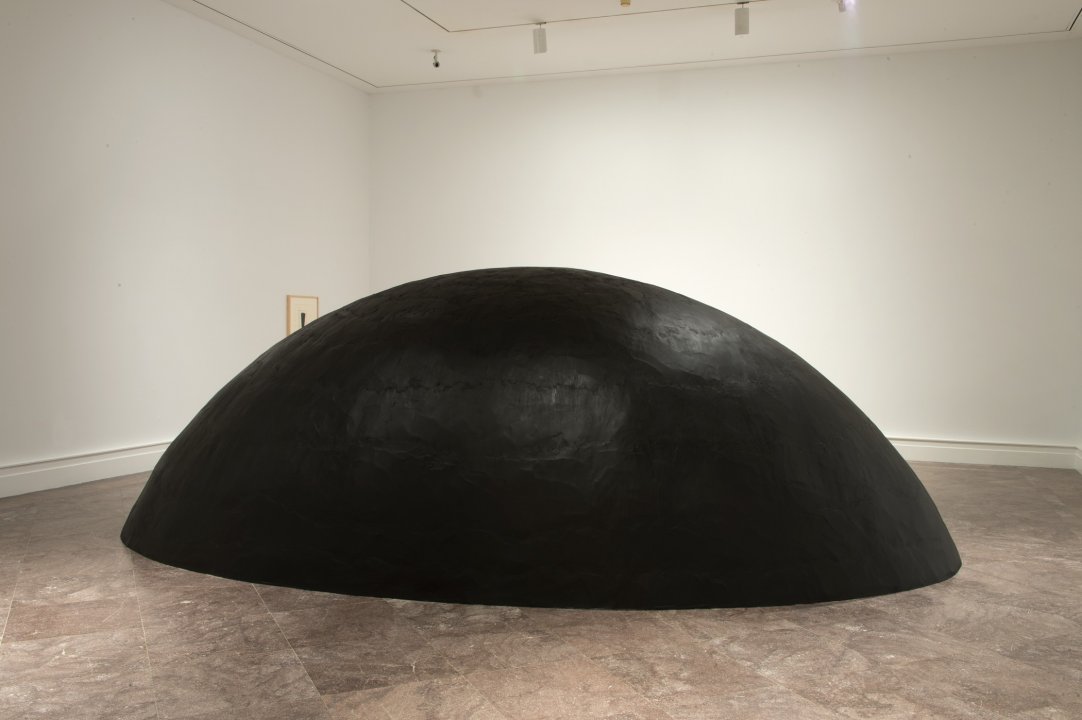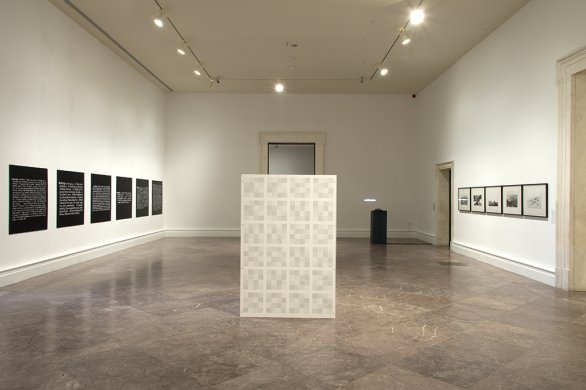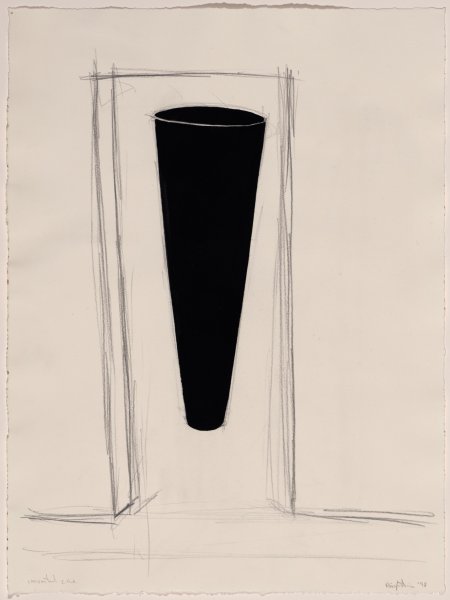Jene Highstein
American, 1942-2013
Black Mound (Turtle), 1976
Artwork Details
Materials
wood, wire, and black concrete
Measurements
overall: 78 x 237 x 147 inches (198.12 x 601.98 x 373.38 cm)
Collection Buffalo AKG Art Museum
Credit
The Panza Collection and by exchange: George B. and Jenny R. Mathews Fund, Bequest of Arthur B. Michael, Albert H. Tracy Fund and Bequest of John Mortimer Schiff, 2015
Accession ID
2015:14.15
Jene Highstein’s sculptural practice exemplifies the notion of “sculpture as place,” a concept that emerged out of many artists’ re-engagement with traditions of monument building in the 1960s and 1970s. Highstein’s Black Mound (Turtle) is a massive black concrete mound that evokes both the austere physical presence of Minimalist sculpture as well as ancient architectural forms like the tholos, a kind of beehive-shaped tomb common in Aegean cultures. In contrast to these works, Black Mound (Turtle) is reconstructed each time it is exhibited. Wooden scaffolding and wire mesh provide a substructure onto which concrete is then poured. After the material is smoothed and dried, the form is stained black. Unlike many of the Minimalists, Highstein did not eschew real-world references and openly suggested specific forms or narratives in his work; for example, Black Mound is parenthetically titled Turtle, connecting its elliptical shape with the natural world. In its dimensions, scale, and form, Highstein’s work is both human and architectural. A shade taller than an average person, it is too small to be an environment but too large to be a figure. Its swollen form is at once organic and zoomorphic, but also reminiscent of a domed structure. Pitched between sculpture and place, Highstein’s Black Mound (Turtle) is emblematic of the key concerns and debates surrounding three-dimensional art in the 1970s.
Label from Looking at Tomorrow: Light and Language from The Panza Collection, 1967–1990, October 24, 2015–February 7, 2016









